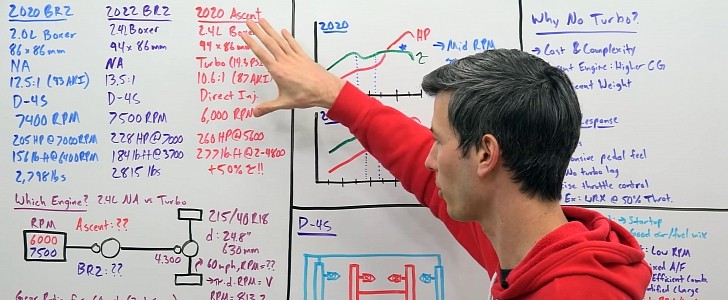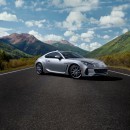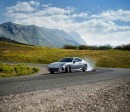Forced induction is a simple concept. More air translates to bigger bangs in the combustion chamber, representing an improvement in horsepower and pound-feet of torque over a free-breathing engine. But as far as the BRZ is concerned, Jason Fenske believes that a turbo isn’t needed.
A common complaint of the previous-generation sports car was that it didn’t have enough oomph, and I agree with that. On the other hand, adding a turbocharger would spoil the recipe with additional weight and complexity.
Not only does the turbo stress the engine more than natural aspiration, but the piping and intercooler would also change the weight distribution and center of gravity. Oh, and lest we forget, forced induction costs money.
The 2020 model year is currently listed at $28,845 excluding destination charge in the U.S., making the boxer-engined sports car more expensive than the Ford Mustang. Now imagine how high the sticker price would rise with the addition of a turbo, then put yourself in the automaker’s shoes for a moment. The BRZ was never a huge seller, and any drastic changes to the starting price would alienate an already dwindling pool of potential customers.
According to the man behind Engineering Explained, there are a few other technicalities we haven’t discussed yet. Take, for instance, the torque curve and throttle response of the 2.4-liter boxer with D-4S technology from Toyota, which combines port with direct injection. If you’re into driving a sports car to its very limit, chances are you want the linearity, predictability, and subtlety of natural aspiration over a force-fed engine option.
Last but certainly not least, don’t forget about engagement. Extracting every ounce of performance from a turbocharged engine is pretty easy, but doing so in the BRZ means high revolutions per minute to get into the peak torque band, lots of shifting because the torque peaks high in the rev range, and more attention to your revs and gear when you enter and exit a corner.
Not only does the turbo stress the engine more than natural aspiration, but the piping and intercooler would also change the weight distribution and center of gravity. Oh, and lest we forget, forced induction costs money.
The 2020 model year is currently listed at $28,845 excluding destination charge in the U.S., making the boxer-engined sports car more expensive than the Ford Mustang. Now imagine how high the sticker price would rise with the addition of a turbo, then put yourself in the automaker’s shoes for a moment. The BRZ was never a huge seller, and any drastic changes to the starting price would alienate an already dwindling pool of potential customers.
According to the man behind Engineering Explained, there are a few other technicalities we haven’t discussed yet. Take, for instance, the torque curve and throttle response of the 2.4-liter boxer with D-4S technology from Toyota, which combines port with direct injection. If you’re into driving a sports car to its very limit, chances are you want the linearity, predictability, and subtlety of natural aspiration over a force-fed engine option.
Last but certainly not least, don’t forget about engagement. Extracting every ounce of performance from a turbocharged engine is pretty easy, but doing so in the BRZ means high revolutions per minute to get into the peak torque band, lots of shifting because the torque peaks high in the rev range, and more attention to your revs and gear when you enter and exit a corner.

















































